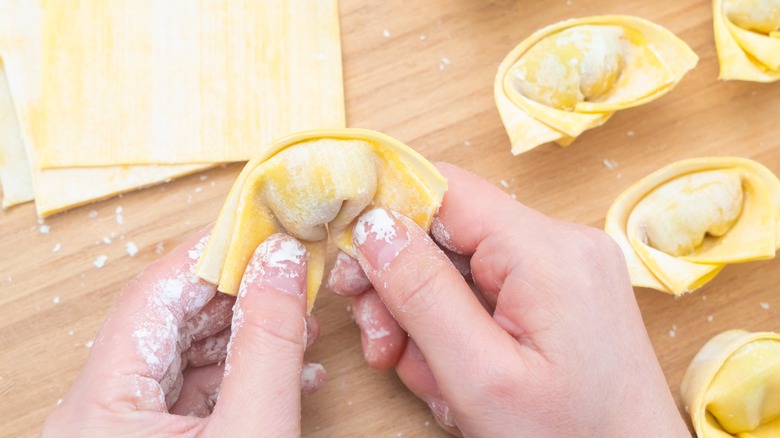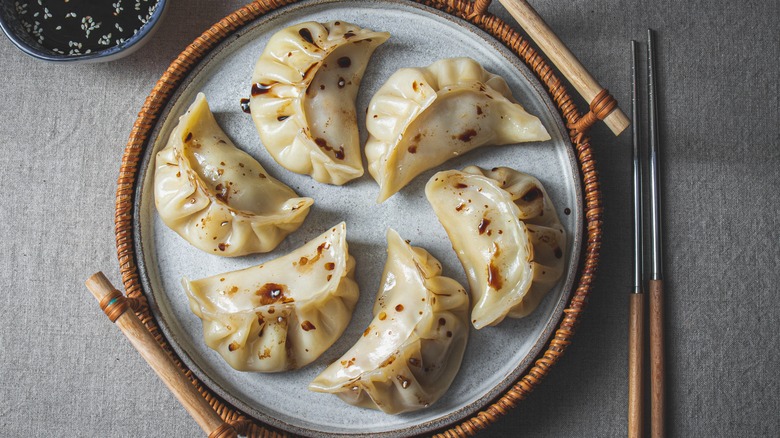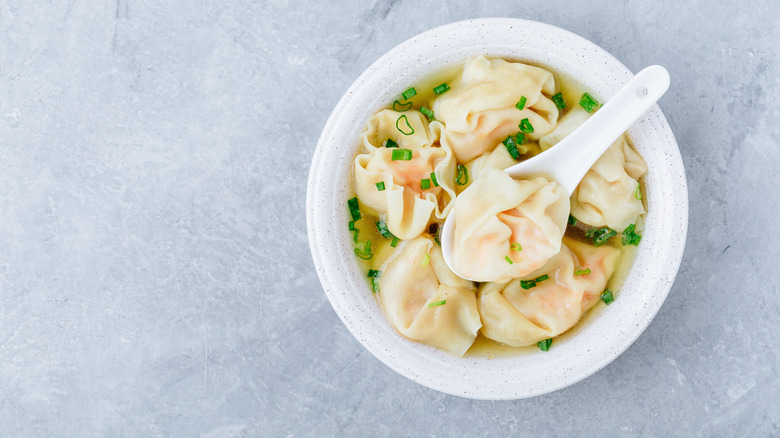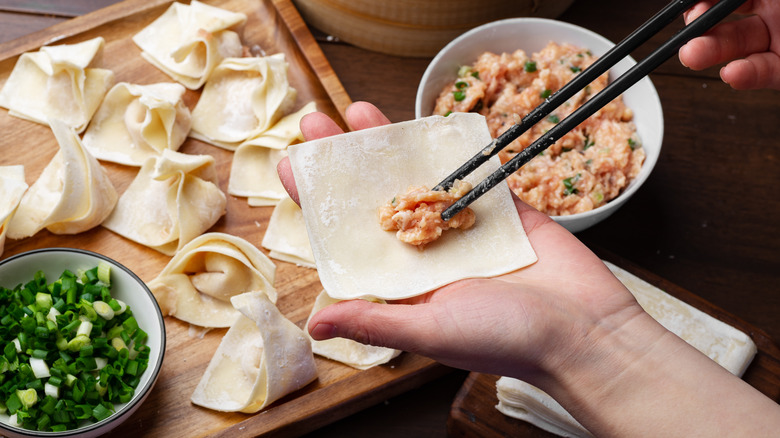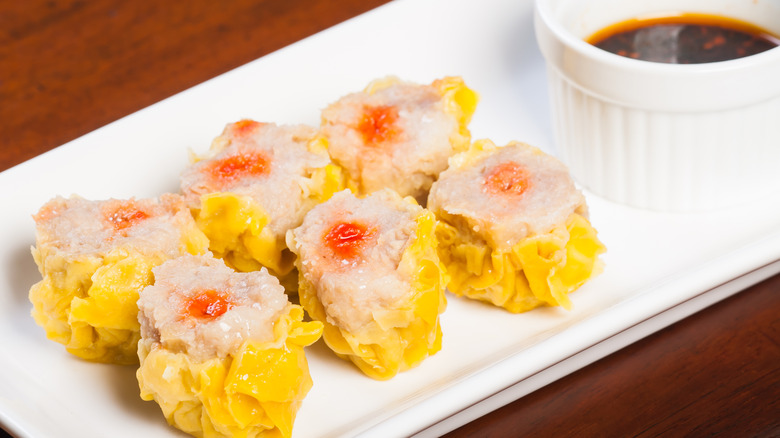The Difference Between Wontons And Dumplings
Legend has it that a physician from China, Zhang Zhongjing made the first dumpling in 280 AD in an attempt to cure frostbite, per History. There's a reason for the curved shape of the original dumplings: because villagers of Zhang's hometown had frostbite around the ears from the freezing temperatures, he blended together cooked lamb, black peppers, and medicinal herbs, wrapped them in dough, and then folded them to resemble ears before boiling (per Dumpling 100).
Since then, dumplings have become known more for their delicious taste over their medicinal properties, and forms of dumplings have sprung up in many other cultures. Even across China, there are many variations on the dough-wrapped meat and vegetable fillings, from the classic jiaozi to the more gyoza-like guotie to xiao long baos to wontons. But what's the actual difference between wontons and dumplings? These two famous dishes may initially seem to have a lot in common, but their subtle differences deserve recognition.
What is a dumpling?
A dumpling, per Britannica, is a "small mass of leavened dough that is either boiled or steamed and served in soups or stews or with fruit." In the purest sense of the definition of a dumpling, no filling is required, just the dough or meal it's formed with, mixed with an egg to hold its shape and then cooked in water or gravy stock.
In Chinese, dumplings are called jiaozi (per Collins Dictionary), after wheat flour was invented, dumplings soon came after, and their meat-filled dumpling shaped like a half-moon became immensely popular in 500 CE alongside the mass production of wheat and ground wheat, per Umami Cart. During the Northern Song Dynasty, the earliest known currency was called "jiao zi," and then for Lunar New Year people began to eat dumplings for their resemblance to silver ingots, representing wealth, leading to the food being called jiao zi to reinforce the symbolic representation of prosperity (University of Southern California). Today, dumplings can be enjoyed all year round and generally can be boiled, steamed, or pan-fried (via Bon Appétit).
What is a wonton?
In Chinese, wontons are called 餛飩 huntun, and in Cantonese it's pronounced wàhn tān. The literal meaning of the two Chinese words can be roughly translated to "swallowing a cloud," according to Made with Lau. While wontons are technically a type of dumpling, they go by a different name in Chinese from the "jiaozi," and one of the main distinctions between a wonton and a dumpling is that wontons are made with a much thinner dough that is usually square-shaped.
While dumplings have a long history, wontons only first appeared in 1644, and yet were still a popular and palatable vehicle to deliver traditional Chinese medicine in Hong Kong. They were first enjoyed by the wealthier classes, became a working class dish post World War II, and then made their way west to Canada with immigrants. Today wontons usually contain prawn or shrimp in addition to pork, shallots, and ginger (via Rice Bowl Deluxe).
The difference between wontons and dumplings
Wontons use thinner wrappers, and this difference in the thickness can be attributed to how they are usually cooked. Since wontons are either deep-fried or cooked in boiling water or broth, there is less risk of losing the shape of the dumpling and thus the wrappers can be thinner than dumplings, which could risk falling apart in a pan-fried process. Similar to dumplings, wontons can be folded in at least three different ways, according to The Woks of Life, but not as many as dumplings can be (which is at least 24 ways, per Souped Up Recipes).Their wrappers are also usually square, according to A Dumpling Thing, and the filling usually always has a pork and shrimp combination.
Another difference is that while dumplings can be eaten as a meal itself, wontons are usually eaten as an appetizer or even a snack (per CookGem). Often, wontons are smaller in size compared to dumplings and they can be served in a soup with condiments like pickles, coriander, and ginger, and even noodles to complement the meal (via 196 Flavors).
Other types of dumplings from China and beyond
Chinese dumpling varieties don't end with the jiaozi and wonton, there's also the baozi, which is a round dumpling with an outer layer more like a fluffy bread — bao literally translates to bun (A Dumpling Thing). Haw gow is a dumpling stuffed with shrimp and encased in a clear wrapper made from tapioca and wheat starch, usually eaten during Cantonese dim sum, and shumai is an opened-face dumpling that normally has a decorative vegetable on top. Then, there are of course soup dumplings, or xiao long bao, and then ba-wan, a Taiwanese meatball street food that is technically a dumpling, since it's meat encased in a sticky sweet potato and rice flour wrapper.
The dumpling party doesn't end there: to get more of your fill, there's the melt-in-your-mouth Mexican dumpling, the chochoyotes, the pierogi, Italian ravioli, Indian sweet dumplings, and much, much more.
